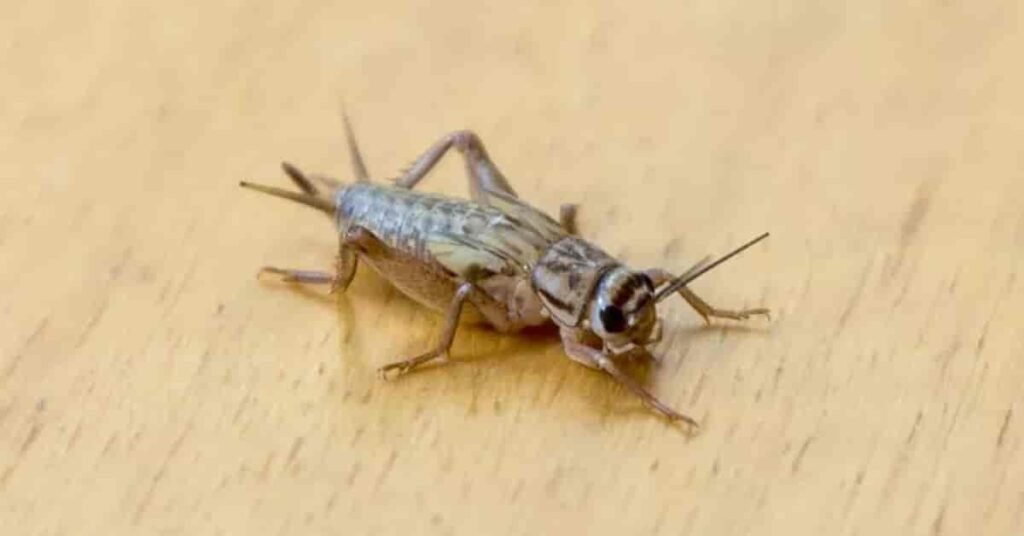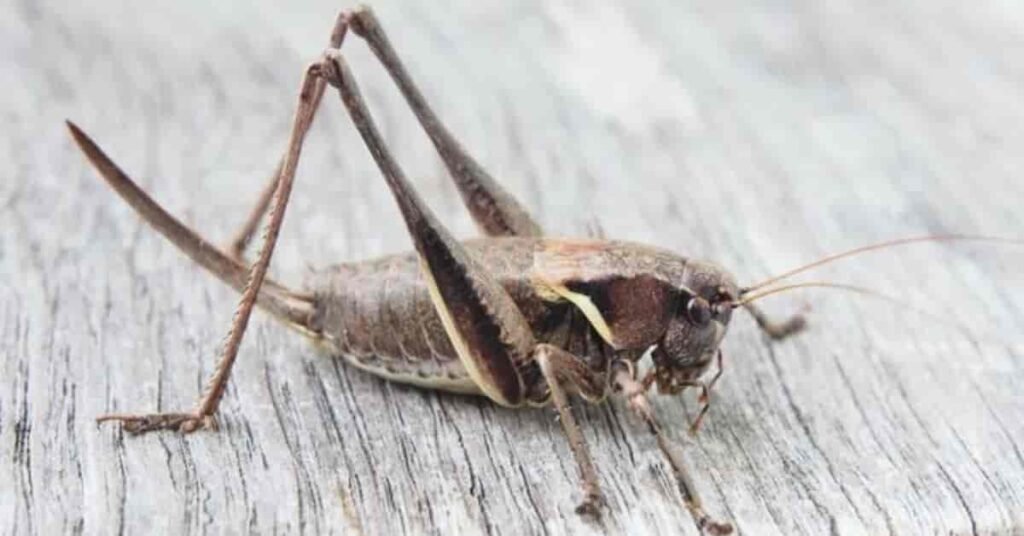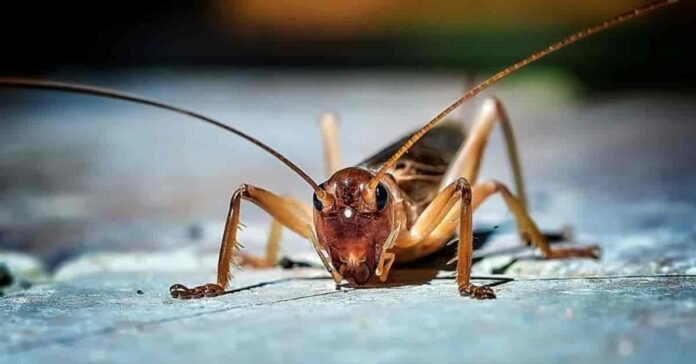They are fascinating animals that have a distinct role to play in the world of nature. Their diet is which is of immense interest to many. In this piece we’ll examine their relationship to mushrooms that constitute a significant element that forms a significant element to their meals. They are omnivores and consume numerous foods, from plants and small animal. What do crickets eat fungi? Their diet also includes fungi, showing how crickets have a special bond with fungi, using them for nutrients and energy.
Learning about crickets and fungi helps us understand the natural world better. Join us as we discover what crickets eat, focusing on fungi. We’ll see how these insects and fungi work together.
Key Takeaways:
- Crickets consume a wide variety of foods however, fungi are a major factor in the nutrition requirements.
- Many species of fungi can be consumed by crickets, supplying crickets with vital nutrition and energy.
- The connection between fungi and crickets is a mutually beneficial one each organism benefiting through the interactions.
- The understanding of the cricket’s diet will provide important insights into the importance of ecology for the insects.
- Examining the entire life cycle of crickets, as well as the fungal food they consume, will aid in understanding the vastness of nature’s world.
What Do Crickets Eat Fungi: Exploring Their Fungal Diet
The fascinating crickets have various food preferences. They feed on a range of both fungi and plants. We will explore the types of fungi they consume and how they digest it.
Types of Fungi Consumed by Crickets
Crickets are not picky about their fungal food. They eat mushrooms, molds, and yeasts. Some common fungi they eat include:
Edible mushrooms such as oyster, shiitake and button mushrooms
Wood fungi decomposing like Armillaria and Trametes
Baking molds and yeast varieties can be found in fermented food items.
The wide variety of fungi found in their diet demonstrates their flexibility and capacity to flourish at different locations.
How Crickets Process Fungal Matter
Crickets have special digestive systems for breaking down fungi. Their gut has bacteria and enzymes that help digest chitin, a key fungal component. This lets them get nutrients from fungi efficiently.
Fungi are an excellent source of protein, minerals and other nutrients that crickets require. Through eating mushrooms, they are able to improve their growth and development. They can thrive across different environments, and plays a crucial roles in the ecosystems they live in.

What Do Crickets Eat? A Breakdown of Their Nutritional Sources
The fascinating crickets are essential to the diverse ecosystems. They’re omnivores with an extensive diet. It includes the plant matter, various bugs, as well as organic matter. Knowing what do crickets eat helps us understand their ecological importance and how they survive and grow.
In nature crickets consume a broad variety of plant species, including leaves and stems, flowers as well as fruits. They get the nutrients, carbs and minerals they require. In addition, they eat tiny insect, spiders and occasionally, even their own type.
Organic debris, like decaying wood and animal waste, is a big part of their diet too. This food source is rich in nutrients and cellulose. Crickets can digest cellulose with their special digestive systems.
Learning about crickets’ diet helps us understand their role in ecosystems. This knowledge is useful for conservation, habitat management, and creating sustainable cricket-based products. As we learn more about their diet, we discover new ways to help both nature and human needs.
| Food Source | Percentage of Cricket Diet |
| Plant Matter (Leaves, Stems, Flowers, Fruits) | 50-70% |
| Other Insects and Arachnids | 20-40% |
| Organic Debris (Decaying Wood, Leaf Litter, Animal Waste) | 10-20% |
The table above shows the main parts of a cricket’s diet. It highlights the importance of plants, other insects, and organic debris.

What Do Crickets Eat Mushrooms? Facts About Their Diet
They are an omnivore insect that means they eat an array of different foods such as fruits, plants veggies, organic matter. What do crickets eat mushrooms? They are a major source of fungi, could make up a part of their diet, specifically in nature where crickets search plants that are decaying. They are a source of protein as well as carbohydrates, which crickets require to grow and have energy. Crickets that are domesticated, usually raised to feed their pets they can also be fed mushrooms when they are consumed along with vegetables and grains. Although mushrooms are healthy for crickets to eat, it’s important that you avoid poisonous varieties in order for their safety.
What Do Mole Crickets Eat? A Guide to Their Feeding Behavior
Mole crickets are an omnivore insect who consume various organic materials. They feed on roots, stems and plants that are underground, making their presence known as a pest in the gardens as well as in fields of agriculture. What do mole crickets eat? Alongside the plants they consume, they also eat tiny bugs, larvae, as well as decaying organic matter that is in soil. They are at home in the subterranean environment. Mole crickets rely on their strong front legs to dig through the earth to search for sources of food. They contribute significantly in soil aeration. Their consumption habits can harm the grass and plants, which could result in serious harm if they are not taken care of.
| Category | Examples |
| Plant Material | Roots, stems, underground vegetation |
| Insects | Larvae, small insects |
| Decaying Matter | Organic material in soil |
What Do Cave Crickets and Mole Crickets Eat: Species-Specific Preferences
Common crickets eat a wide variety of foods, including fungi. But, some crickets have more specific diets. We’ll look at what do cave crickets eat. Cave crickets, formerly known as the camel crickets, reside in damp and dark areas such as caves and cellars. They mainly eat fungi that grow in these dark spots. Their bodies are adapted to break down and use the nutrients from fungi, which is their main food source. Mole crickets, on the other hand, live underground and eat plant roots, tubers, and soil. They might eat some fungi, but mostly they eat the plants they find while digging. This makes their diet different from crickets that mostly eat fungi.
FAQ
What do crickets eat?
Crickets eat both plants and animals. They like leaves, stems, seeds, fruits, and other insects. They also eat organic debris they find around them.
What do crickets eat mushrooms?
Yes, crickets eat mushrooms and other fungi. They find these in their natural habitats. Mushrooms and fungi give them important nutrients.
What do mole crickets eat?
Mole crickets eat different things than other crickets. They like plant matter and also eat worms, insect larvae, and plant roots. Their underground tunnels help them find these foods.
What do cave crickets eat?
Cave crickets live in dark, damp places like caves and cellars. They mostly eat fungi. This diet gives them the nutrients they need to survive.
How do crickets process fungal matter?
Crickets have special digestive systems. They can break down and get nutrients from fungi. This helps them get energy and nutrients from fungi.
What types of fungi do crickets consume?
Crickets eat many types of fungi, like mushrooms and molds. They prefer fungi that are breaking down organic matter. These fungi have more nutrients that crickets can easily digest.

